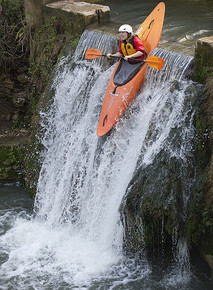
Earlier this year, I discussed an experiential marketing program we measured for an outdoor sports retailer. I spoke to the importance of measuring attitude and behavior of retail club members versus non-members. At program’s end, we had a clearer understanding of how impact differed between the two groups. But we also uncovered some new, unexpected findings about venue selection.
I’ve written about venue selection in a couple previous posts, like this one, and this one. This program was no exception. Selecting an appropriate venue in which to promote your brand through experiential marketing can significantly improve the impact on consumers’ attitudes and future behavior.
Why did venue selection matter for an outdoor sports retailer’s experiential marketing?
The outdoor sports retailer campaign had two categories of events at which to activate: Big Events and Small-Scale Extensions.
Big Events were defined as existing events with mid-sized attendance that any consumer could attend. Festivals with a branded footprint onsite are a good example. These types of events provide an opportunity to engage consumers who have varying levels of awareness or experience with the brand.
Extensions were a little different. These events were targeted toward outdoor enthusiasts – the exact niche toward whom the brand is geared. The events were designed for attendees to actually participate in outdoor activities, like biking, hiking, rock climbing, etc. The idea was to associate the brand with doing the activities themselves.
How did venue selection impact the consumer experience?
At the start of the program, I hypothesized that the brand team would generate the strongest impact at Big Events, due to more opportunities to engage consumers while they were walking around. I suggested that Extensions would have a relatively smaller experiential marketing impact, due to consumers being more focused on the outdoor activity itself.
It’s important to note that when I say impact, I’m not referring to the volume of consumers engaged. Big Events always have a larger volume. By impact, I mean the percentage of consumers leaving with intent to purchase from the retailer or to sign up for an outdoor class or adventure trip.
Turns out, data suggested we reject that hypothesis.
Extension events tended to generate the stronger interest in the brand. Retail Club Members at Extension events left with a greater interest in the brand (84%) than those who attended Big Events (55%).
The brand team also had a greater impact on intent to sign up for outdoor classes or adventure trips at Extension events. Consumers at Extension events were more likely to sign up (72%) than those reached at Big Events.
Conclusion
The results suggested that hosting branded experiential marketing events that let outdoor enthusiasts participate in the activities they know and love gives them a strong, positive impression of the brand.
There’s merit to educating consumers about the brand’s products at a standard footprint, but to actually let them demo the products in the field takes the experience to another level.
Photo Source: https://www.flickr.com/photos/dvids/
